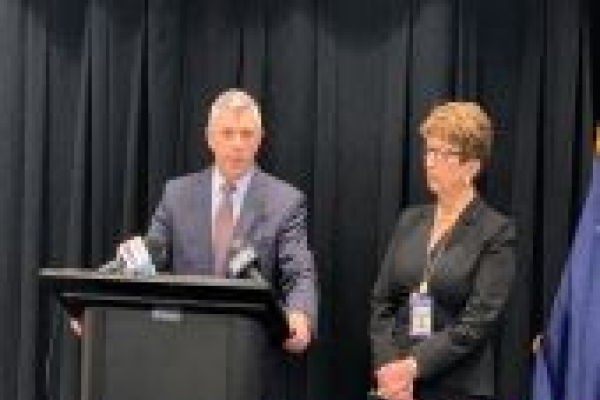March 4, 2020
Oneida County Updates Public on COVID-19

COVID-19 was initially detected in Wuhan City, China in December 2019. Since then, 68 countries worldwide have confirmed cases of COVID-19 and New York State recently confirmed its first cases of the virus. Health officials are urging everyone to take measures to prevent the spread of this virus and to be prepared if COVID-19 is detected here in Oneida County.
“Working together with the State Department of Health and our local healthcare providers, Oneida County has all of the protocols in place to detect, assess, test, respond to and monitor any case of COVID-19 in the county,” said Oneida County Executive Anthony J. Picente Jr. “This process was successfully carried out this week when two county residents who displayed flu-like symptoms days after returning from Italy were immediately tested and found to be negative for COVID-19. We will continue to remain on top of this situation and be prepared to swiftly respond to any future such matters.”
Symptoms of COVID-19 include fever, cough and shortness of breath. If you have any of these symptoms and have traveled to China, Iran, Italy, Japan or South Korea in the last 14 days and/or have had contact with a confirmed case of COVID-19, please contact your healthcare provider before going to the office, emergency room or urgent care.
All residents should be vigilant in taking daily precautions to prevent the spread of illness whether it is COVID-10, flu or any other virus.
“Taking steps to prepare ahead of a possible outbreak is invaluable and all community members can take preventative measures to reduce the spread of this virus,” said Oneida County Health Department Director Phyllis D. Ellis, BSN, MS, FACHE. “Practice good handwashing hygiene, cover your cough or sneeze, stay home if you are sick and know that it’s still not too late get vaccinated for the flu.”
The Centers for Disease Control and Prevention (CDC) has guidance and tips on preventing the spread of COVID-19 throughout the community. Tips include:
Households
- Create a household plan of action
- Practice good handwashing
- Be prepared if your child’s school or childcare facility is temporarily dismissed
- Plan for potential changes at your workplace
Businesses and Employers
- Educate and encourage good handwashing
- Provide education and guidance on COVID-19
- Remind employees who are sick to stay home – be flexible with sick leave policies
- Perform routine cleaning
- Advise employees to take certain steps before traveling
- Prepare and plan should there be large absenteeism amongst staff
Childcare Programs and K-12 Schools
- Educate and encourage good handwashing
- Provide education and guidance on COVID-19
- Perform routine cleaning
- Remind students and staff to stay home when sick
- Review, update and implement emergency operation plans
- Monitor and plan for large rates of absenteeism of both students and staff
For more information and guidance for all sectors in the community in preventing the spread of COVID-19, please visit https://www.cdc.gov/coronavirus/2019-ncov/community/index.html.
COVID-19 is rapidly evolving and new information is being learned daily. It can be difficult to keep up with and understand what information is accurate and credible. Some frequently asked questions:
Do I need to wear a mask for protection?
- No. COVID-19 manifests much like the flu. The CDC does not recommend that people who are well wear a facemask to protect themselves from respiratory illnesses, including COVID-19. Masks are for the patients that may have been exposed to an illness to avoid spreading it to others.
Is there a risk of getting COVID-19 from packages or products shipped from China?
- According to the CDC, currently there is no evidence to support transmission of COVID-19 associated with imported goods and there have not been any cases of COVID-19 in the United States associated with imported goods.
Can COVID-19 survive on surfaces?
- According to the World Health Organization, it is not certain how long the virus that causes COVID-19 survives on surfaces, but it seems to behave like other coronaviruses. Studies suggest that coronaviruses (including preliminary information on the COVID-19 virus) may persist on surfaces for a few hours or up to several days. This may vary under different conditions (e.g. type of surface, temperature or humidity of the environment).
- If you think a surface may be infected, clean it with simple disinfectant to kill the virus and protect yourself and others. Clean your hands with an alcohol-based hand rub or wash them with soap and water. Avoid touching your eyes, mouth or nose.
Additional resources available:
COVID-19 Factsheet - https://www.cdc.gov/coronavirus/2019-ncov/downloads/2019-ncov-factsheet.pdf
Stop the Spread of Germs - https://www.cdc.gov/coronavirus/2019-ncov/downloads/stop-the-spread-of-germs.pdf
New York State Department of Health COVID-19 Hotline for the Public- 1-888-364-3065









